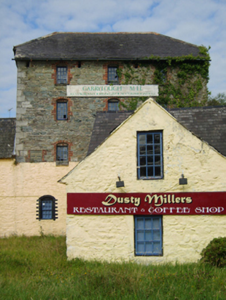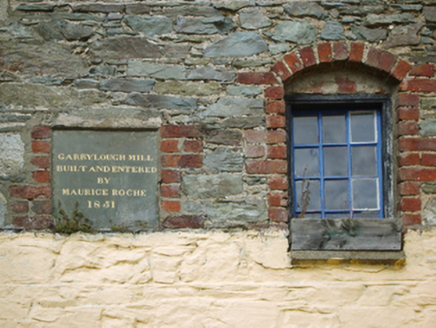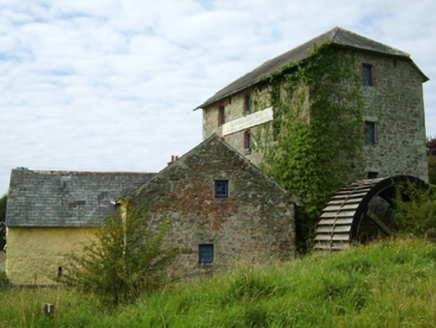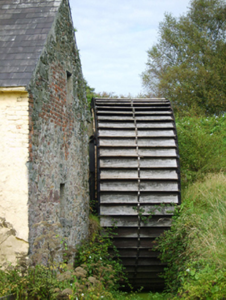Survey Data
Reg No
15703306
Rating
Regional
Categories of Special Interest
Architectural, Technical
Original Use
Mill (water)
Date
1850 - 1855
Coordinates
307452, 130396
Date Recorded
13/09/2007
Date Updated
--/--/--
Description
Attached three-bay three-storey mill with half-attic, dated 1851, on a rectangular plan. Closed, 1964. "Restored", 1975-7. Now disused. Hipped gabled slate roof on collared timber construction with lichen-covered terracotta ridge tiles, and cast-aluminium rainwater goods on slightly overhanging slate flagged eaves. Part creeper- or ivy-covered coursed rubble stone walls with cut- or hammered granite flush quoins to corners. Square-headed window openings in camber-headed recesses (upper floors) with slate sills, and red brick block-and-start surrounds framing replacement timber casement windows having square glazing bars. Square-headed window openings (remainder) with slate sills, and red brick block-and-start surrounds supporting rough hewn granite lintels framing replacement timber casement windows having square glazing bars. Interior including (ground floor): limewashed drying floor with timber boarded ceiling on timber joists on timber beams; (first floor): limewashed milling floor with timber boarded ceiling on timber joists on timber beams; (second floor): limewashed "dust floor" or "hopper floor" with timber boarded ceiling on timber joists on timber beams; and (top floor): limewashed grain floor. Set in unkempt grounds on a corner site.
Appraisal
A mill 'built and entered by Maurice Roche [d. 1866]' representing an important component of the mid nineteenth-century industrial heritage of County Wexford with the architectural value of the composition suggested by such attributes as the compact rectilinear plan form; the construction in a blue-green Lacken fieldstone offset by silver-grey granite dressings producing a pleasing palette; the somewhat disproportionate bias of solid to void in the massing compounded by the uniform or near-uniform proportions of the openings on each floor; and the high pitched roofline. A prolonged period of neglect notwithstanding, the elementary form and massing survive intact together with substantial quantities of the original fabric, both to the exterior and to the interior, including a high breast "Pitchback" waterwheel pinpointing the engineering or technical dexterity of a mill making a pleasing, if increasingly forlorn visual statement in a sylvan setting.







